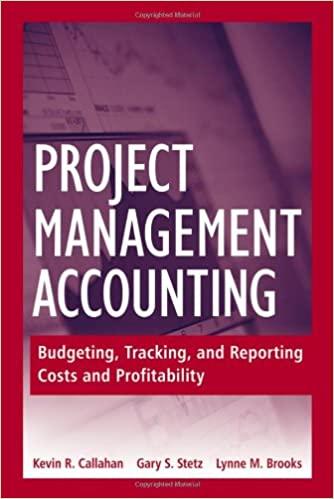Lou Barlow, a divisional manager for Sage Company, has an opportunity to manufacture and sell one of two new products for a five-year period. He has computed the cost and revenue estimates for each product as follows: Product B Product A $ 340,eee $540,000 Initial investment: Cost of equipment (zero salvage value) Annual revenues and costs: Sales revenues Variable expenses Depreciation expense Fixed out-of-pocket operating costs $ 380,000 $ 170,000 $ 68,000 $ 86,000 $ 460,000 $ 206,00 $ 108,000 $ 66,00 The company's discount rate is 20% Click here to view Exhibit 248.1 and Exhibit 148.2. to determine the appropriate discount factor using tables. This is a great review problem that reinforces the individual concepts covered using a comprehensive example. To answer the questions, you must first calculate the annual net cash inflows as follows: Sales revenue minus variable expenses minus fixed out-of-pocket operating costs Then you will calculate the following payback period (even flows), net present value (NPV). Internal rate of return HDOLEH menneth This is a great review problem that reinforces the individual concepts covered using a comprehensive example. To answer the questions, you must first calculate the annual net cash inflows as follows: Sales revenue minus variable expenses minus fixed out-of-pocket operating costs. Then you will calculate the following: payback period (even flows), net present value (NPV), internal rate of return (IRR) and profitability index Required: 1. Calculate the payback period for each product 2. Calculate the net present value for each product 3. Calculate the internal rate of return for each product 4. Calculate the profitability index for each product Complete this question by entering your answers in the tabs below. Reg 1 Reg 2 Req3 Reg4 Calculate the payback period for each product. (Round your answers to 2 decimal places.) Product B Product A years Payouck period years Reg 2 > Help Save & Exit Su Check my wor Then you will calculate the following: payback period (even flows), net present value (NPV), Internal rate of return (IRR) and profitability index. Required: 1. Calculate the payback period for each product 2. Calculate the net present value for each product. 3. Calculate the internal rate of return for each product. 4. Calculate the profitability Index for each product Complete this question by entering your answers in the tabs below. int Reg 1 Reg 2 Reg 3 Reg 4 Calculate the net present value for each product. (Round your final answers to the nearest whole dollar amount.) Product A Net present value Product B Check my work Then you will calculate the following payback period (even flows), net present value (NPV). internal rate of return (IRR) and profitability index Required: Calculate the payback period for each product 2. Calculate the net present value for each product 3. Calculate the internal rate of return for each product 4. Calculate the profitability index for each product Complete this question by entering your answers in the tabs below, Reg 1 Reg 2 Reg 3 Reg 4 Calculate the internal rate of return for each product. (Round your percentage answers to I decimal place le. 0.123 should be considered as 12.3%) Product A Products Internal rate of retum Then you will calculate the following payback period (even flows), net present value (NPV). Internal rate of return (IRR) and profitability Index Required: 1. Calculate the payback period for each product. 2. Calculate the net present value for each product. 3. Calculate the Internal rate of return for each product. 4. Calculate the profitability index for each product Complete this question by entering your answers in the tabs below. Req Reg 2 Req3 Reg 4 Calculate the profitability index for each product. (Round your answers to 2 decimal places.) Product A Product B Profitability index













